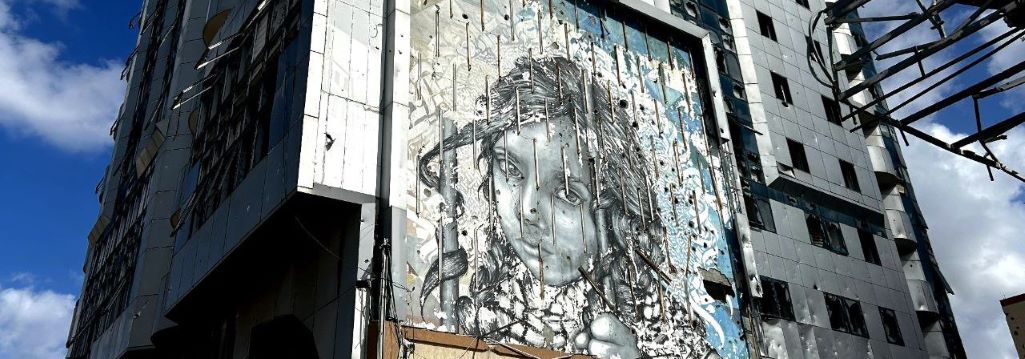Washington, DC, 9 October 2025——
Peace talks between Israel and Hamas are underway in Egypt to negotiate an agreement to the 20-point Gaza peace plan intended to end the war. The plan was proposed by US President Donald Trump, and although it initially received official backing from Israel (Netanyahu) and many international actors, reactions among Gazans, human rights experts, and regional players are deeply skeptical.
The Terms
If Israel and Hamas agree, the fighting immediately stops, and the Israeli Defense Forces (IDF) withdraws to some predetermined lines. The terms of the plan make upfront demands of Hamas. It has 72 hours to release all the hostages, dead and alive, in exchange for some Palestinian prisoners. Under this plan, Hamas basically has to cease to exist. They disarm, deradicalize, and have no role in a future government.
Point 6: “Once all hostages are returned, Hamas members who commit to a peaceful co-existence and decommission their weapons will be given amnesty. Members of Hamas who wish to leave Gaza will be provided safe passage to receiving countries.” That is a lot of trust to bank on, given Israel has vowed to eradicate Hamas from the face of the earth. It would not be a surprise if at least one Hamas member didn’t think that death would be a certainty.
The enclave will have a temporary transitional governance that is overseen by the Board of Peace, which is chaired by Trump and includes Tony Blair (for some reason). According to the plan, no Gazans will be forced to leave. Likewise, Israel will not occupy or annex Gaza. So Trump’s ethnic cleansing, “Gaza Riviera” plan promoted a few months ago, seems to have stalled, at least for the time being.
Points 19 and 20 suggest that, if certain reforms are implemented, the Palestinian Authority will eventually take over. The plan suggests (softly) the possibility of eventual statehood for Palestinians, but there are not a lot of details there.
Concerns for Implementation and Success
There are several structural, political, and strategic reasons why this deal is unlikely to succeed, or at least unlikely to be fully implemented. The plan is vague, ambiguous, and full of loopholes. For instance, “withdrawal” is not clearly defined. To what degree and to what “line” will Israel retreat? Retreat to the “border” of the Gaza Strip has been interpreted in ways that could preserve much of the current status quo. Many essential terms, such as who governs what, how security forces are structured, and how accountability works, are not concrete. Without a precise roadmap, each side may interpret the obligation differently.
Demands for full disarmament of Hamas and the exclusion of any Hamas role in governance are extremely difficult to meet. If those are required before other major concessions happen, there is a high risk that Hamas will say no. This sets the stage for collapse. If Hamas is given very short windows to respond or follow through, but Israel’s obligations are not equally time-bound, this imbalance increases the risk of breakdown.
If Israel is allowed to maintain forces or retain control in buffer zones, that could lead to postponing or avoiding full withdrawal. Then Israel can say Hamas or “security objections” prevented implementation. If things fall apart, Netanyahu can blame Hamas or international actors; Trump can blame Israel or Hamas, depending on which criticism fits best. Also, being seen as pushing for a peace deal has political benefits even if it doesn’t hold.
Netanyahu’s coalition is composed of far-right figures who have repeatedly opposed ceasefires, opposed any authority that includes the Palestinian Authority, and insist on the “complete defeat” of Hamas. Any deal perceived as compromising these goals risks destabilizing his government.
Decades of conflict and broken ceasefires mean there is very little trust between the parties. Whenever there has been a deal, either side fears the other will renege. Implementation mechanisms and verification are weak or undefined. It is worth noting that the last ceasefire or peace agreement collapsed before Phase 2.
The plan seems timed in a way that gives heavy leverage to Israel and the US before full implementation. For example, the hostage release before full withdrawal. If the early phases go poorly or are misinterpreted, Israel can argue that Hamas or others violated the deal first. Further, regional players may support the plan publicly but have concerns or back-channel objections over some of its terms. This increases pressure on Hamas, but also can lead to a lack of sustained support or mediation if things go sideways.
Hidden Agendas
One glaring problem is that in a White House press conference, President Trump said that if Hamas does not accept the deal, Netanyahu has the US’s full backing to do what he wants to do. That is a blank check to continue the genocide in Gaza with impunity.
Will the Israelis actually leave Gaza? Benjamin Netanyahu likes to renegotiate after the fact. After the unveiling of Trump’s Gaza Peace Plan, Netanyahu spoke with Israeli media and said that Israel will not respect all the details of the plan, and is especially against Palestinian statehood. He went further and said that Israel will never withdraw from Gaza. The Israelis will likely find a way to stay, for some security reason or another.
It is also disturbing that, once again, like with the Abraham Accords, no Palestinians were included in the discussions that determined the plan. They are treating Palestinians like objects and not addressing the root issues of the conflict between Palestinians and Israel, which is Israel’s decades-long illegal military occupation. How Trump thinks he can bypass leaving out Palestinians, the same way he did in the Abraham Accords, and not understand that this is going to continue the conflict, is confounding.
If Trump and Netanyahu were serious about an alternative Palestinian leadership to Hamas, why were Palestinians not part of the conversation? The only group on the Palestinian side that will get a vote is Hamas, the group they are pushing out.
Voices from Gaza
A peace deal in Gaza is desperately needed. Palestinians want this genocide to end. Every day, hundreds of Palestinians are killed in Gaza. The horrific suffering, mass starvation, death toll, displacements, and destruction have reached tragic levels. But the way this particular deal is structured—with heavy initial demands on Hamas, ambiguous Israeli obligations, political fractures inside Israel, weak monitoring, and centuries of mistrust—leaves it vulnerable to collapse.
Gazans seem to understand this. Palestinians have always demanded self-determination and freedom. This is tied directly to ending the military occupation. Many view the deal as a “farce,” believing it was crafted with conditions Hamas would “never accept” — meaning suffering continues. The feeling is that it is another promise that may evaporate. If the deal is to survive, it needs more than political theater—it needs architecture robust enough to enforce trust in a setting long devoid of it.
Photo Credit: Shattered Lives, the Aftermath of Gaza war 2023-2025 by Hla-bashbash. Licensed under CC BY SA 4.0
Lara Kajs is the founder and executive director of The Genocide Report, an NGO nonprofit organization in Washington, DC. She is the author of Beyond the Veil: Afghan Women and Girls’ Journey to Freedom (forthcoming), Assad’s Syria, and Stories from Yemen: A Diary from the Field, available in e-book, paperback, and hardcover at Amazon, Barnes and Noble, Apple Books, and independent bookstores worldwide. Distributed by Ingram. Ms. Kajs frequently speaks about atrocity crimes, forced displacement, and International Humanitarian Law (IHL). Follow and connect with Lara Kajs on Facebook, Instagram, X, LinkedIn, and Bluesky.

